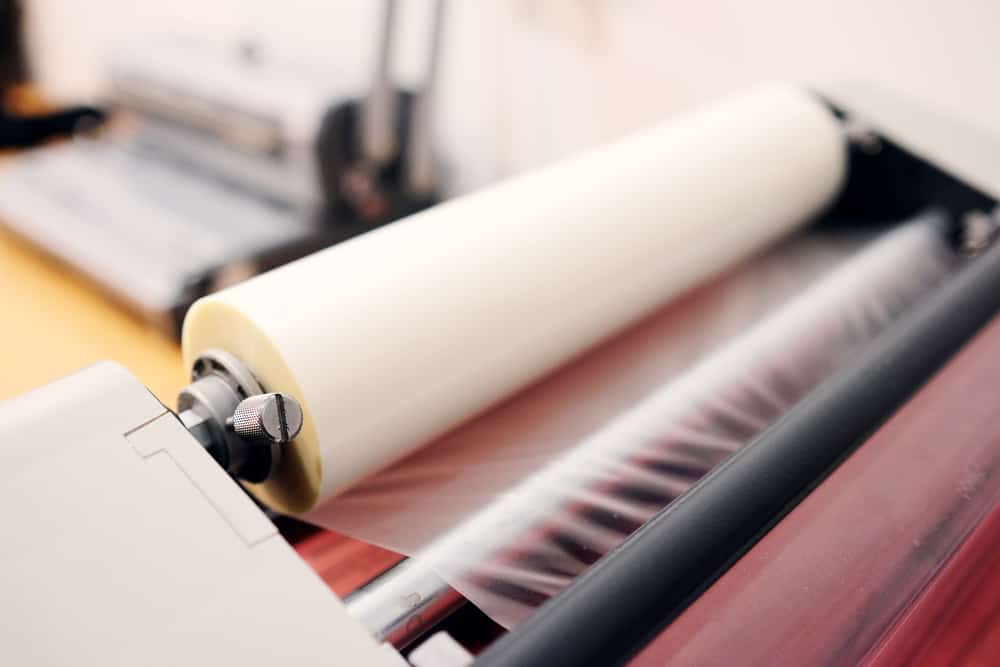This post may contain affiliate links, which means that we get commissions for purchases made through such links, at no additional cost to you. As an Amazon Associate we earn from qualifying purchases.
People often wonder if lamination is one of the ways to preserve receipts from fading. There are divergent opinions on this subject, so our team decided to make our findings on the subject matter. This comprehensive article considers both sides of the argument.
Will laminating receipts preserve them? A cold laminate can help preserve your receipt but hot-melt lamination can damage your receipts more quickly, rather than preserve them. But whether you laminate your receipts or not, they will eventually fade. Lamination can only extend the lifespan of your receipts, provided that you keep them in a cool, dark environment.
As you can see, there are two types of laminates. Why is hot-melt lamination not good for receipts but cold laminates can preserve them? As you read on, we will show you the difference between the two types of laminates and explain why you can preserve your receipts with cold laminates.

How Laminating Receipts Affects Their Image Life?
Hot-melt lamination reduces the image life of receipts. but cold-melt lamination can help increase image life. This difference is caused by the heat-sensitive nature of thermal labels.
Laminates are thin plastic films that you can apply on paper surfaces after printing, usually with a roller. But you can apply laminates in two ways. One method requires heat, while the other doesn’t use heat. Since exposure to heat is contraindicated for thermal labels, hot-melt lamination will not preserve your receipts. Instead, it may cause damage.
Hot-Melt Lamination Will Not Preserve Your Receipts
Hot-melt laminates, also called thermal laminates, use heat to melt polyester (PET) films on paper labels. They are cheaper than cold-melt laminates and are mostly used to encapsulate paper documents (on both sides). But since they use heat application, they are not good for thermal receipts.
Thermal papers use a special printing mechanism that requires no ink. The papers contain heat-sensitive pigments that burst to create imprints under heat. When you feed thermal paper rolls through your thermal printer, heat from the thermal printhead activates the pigment on specific spots on the paper to create imprints.
The problem is that the heat-specific pigments of thermal papers remain active after printing. So as you melt the thermal laminates over the paper, heat from the laminating machine will activate the ink pigments in the thermal paper. This will immediately darken the entire receipt and permanently damage it. That’s why you should never use hot-melt laminates on thermal receipts.
Cold-Melt Lamination Can Preserve Your Receipts
Cold laminates will preserve your receipts from abrasion, oil, and moisture. Many varieties of cold laminates also often offer additional protection from UV light. These are important factors in preserving receipts.
Moisture, UV light, and abrasion are the major elements that damage receipts. And since cold laminates can protect the receipts from these elements, they can help increase the image life of your receipt. Image life refers to how long the imprint on your receipt will remain legible.
How Do Cold-Melt Laminates Preserve Receipts?
Cold-melt laminates don’t use heat application. Instead of heat, the laminate is applied using pressure just like the way you apply sellotapes. They are often used only on one side (the side that has the print). Cold laminates work best on vinyl material but you can use them on paper material too if you can handle the lamination process with care.
What’s more, laminates come in two types of finishes – matte and gloss. There are also Thermal Transfer printable over-laminates for thermal transfer receipts. Gloss laminates have a shiny appearance while matter laminates are duller and smoother.
Are Cold Laminates The Best Way To Preserve Receipts?
Cold laminates can help preserve your receipts but they are not the best. The storage condition of your label matters more than applying laminates. If you expose your receipt to extreme heat even after laminating it, it would still be damaged.
There are many other things you can do to permanently preserve your receipts. In the next section, we will explain better ways to preserve your receipts.
Better Ways to Preserve Your Receipts
Here are a few tips to help preserve your thermal receipts:
Keep Them Away From Heat
Thermal papers are heat-sensitive, so heat exposure causes them to blacken or turn gray. As such, ensure to store them away from all heat sources, including sunlight exposure and kitchen area. The general rule is to store thermal receipts in cool, dark areas to preserve them longer.
Avoid Liquids And Oils
Store your receipts away from areas where liquids and oils can reach them. Like all papers, receipts will be damaged by liquids and oils. Liquids will destroy the paper while oil messes with the paper’s coating and causes discoloration.
Use A Storage Closet
Storage closets or under-counter locations are great locations for storing printed sheets of receipt papers. Sunlight and other aggressors are unlikely to ever reach these areas. It’s even much better if you can get filing cabinets for your receipt storage to keep them safe and secure.
✅ Video – HOW TO STORE AND ORGANIZE RECEIPTS
In this video, Kristine shares how she has effectively stored and organized her receipts for many years. This system is amazingly simple and works perfectly to declutter your house and preserve your receipts. You only need a magazine file, plastic accordion, and labeled folders.
Make Copies
Even in the best storage conditions, thermal receipts only remain legible for about 1 year. After a year, they gradually start fading until they are no longer legible. So the best thing to do is to make photocopies. In most cases, customer rights stipulate that photocopies are valid proofs of purchase. You can also staple the faded original copy to the photocopy to make them more valid.
If your phone has a good camera, you can also snap your receipts so that you can keep digital copies. Digital copies last forever but you must maintain proper backups to make sure they won’t ever get lost.
What Are The Benefits of Lamination?
Indeed, there are better ways to preserve your receipts than to laminate them. But there are reasons why you might still want to consider lamination. They offer protection, durability, and rigidity to your receipts. They can also help enhance the prints on your receipts. These benefits apply to all types of thermal labels and not just receipts.
Protection, Durability, and Rigidity
Thermal inks are generally prone to scratching and scuffing but a layer of laminate will help protect the ink from abrasion. Laminate films are usually designed to withstand friction and rigorous handling. They also offer some form of tear-resistance, thickness, and structural strength.
Print Enhancement And Allure
Premium lamination would make your print more vivid. Barcodes on your receipt will stand out with visual and tactile finishes. The print will also remain clean since the laminate would protect it from abrasion and chemicals. You can even wipe the receipt whenever you notice dirt or dust on it.
Specialty laminates increase your printed material’s allure by engaging your sight, touch, and other senses at once. When you consider this alongside the benefits of increased versatility and durability, you can still opt for cold-melt lamination to preserve your receipts better.
✅ Video – How to “Cold Laminating” A Picture
You will see a demo of cold lamination in this video. You can laminate receipts just the same way pictures are laminated. The process is very simple and seamless if you know what to do. If you are willing to learn how this simple process is done, you should watch this video.
Related Questions
How Long Does It Take For A Receipt To Fade?
Most receipts often fade within 6 months. But if you store them properly, they can remain clear and legible for anywhere between 1 and 7 years. To store your labels properly, keep them in a cool, dry, and dark area with 25°C temperature and 45-65 percent humidity.
Outside the proper storage environment, your receipt will derange quickly and will no longer be legible within a short while. Remember that thermal receipts are not built to withstand moisture and extreme temperatures, oil, and chemicals, among other elements.
How Do I Get My Receipt Ink To Reappear?
If your receipt has faded, but the paper is still in good condition, you can make the print appear by blowing hot, dry air on the receipt from a distance. A good tool to use for this is your blow dryer. Hold it at an arm’s length from the receipt and let its hot hair blow on the paper, starting from the lowest level of heat.
If you use too much heat or move too close, your receipt will blacken, and you might never be able to recover the print. So you must be very careful when using this method.
What Happens If You Lose A Receipt?
If you have lost your receipt, it doesn’t mean you have lost every payment proof possible. Some vendors keep copies of cash-register receipts, so you can always get a reprint. However, most retail stores don’t keep copies. That’s why you must always keep copies (photocopy or digital) handy in case you lose the original.
Conclusion
While cold laminates might help preserve your receipts, they do not offer the best protection. There are better ways to preserve your receipts. Make sure to handle, store, and organize them properly and they will last long. More importantly, make sure you make copies and keep them.
